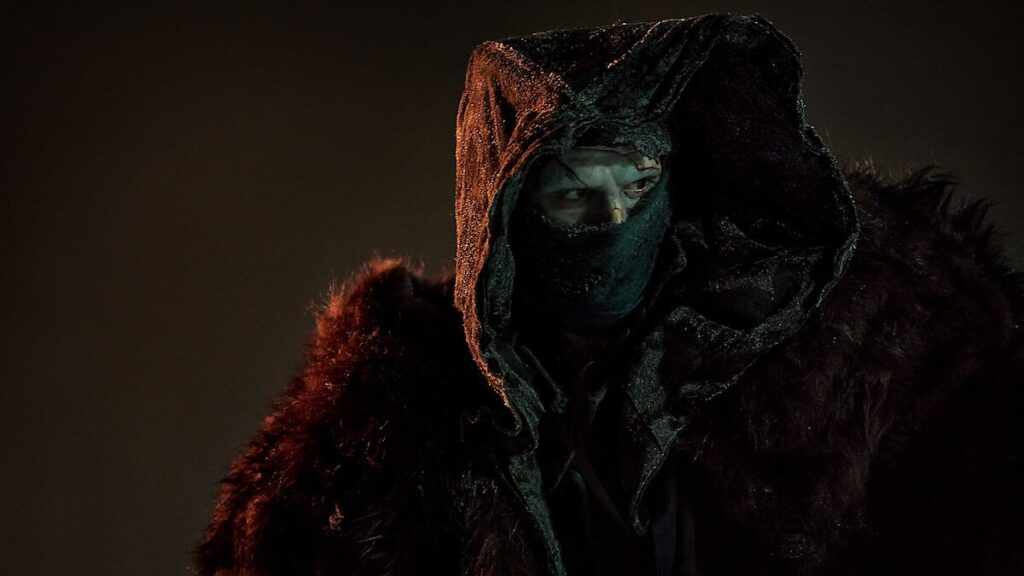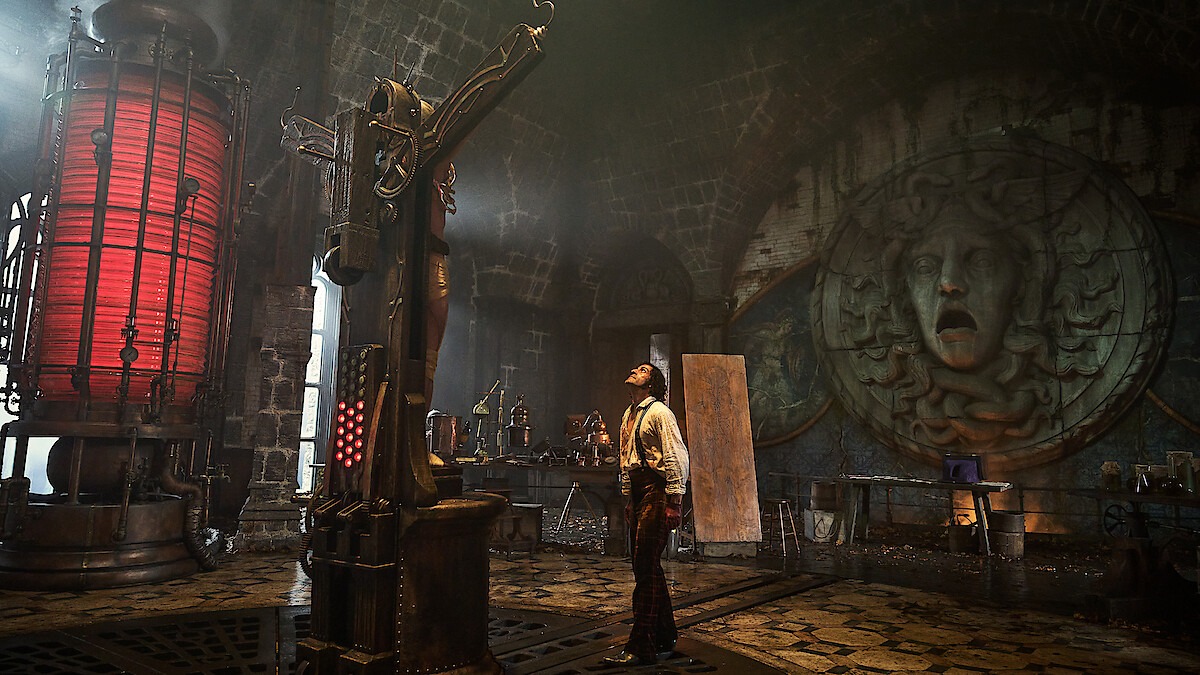Rating: 8.5 / 10

From the moment the lights dim and del Toro’s brooding Gothic vision blooms across the screen, Frankenstein (2025) demonstrates it is much more than another monster movie. This is Guillermo del Toro’s lifelong passion project come to life, a film that uses the familiar contours of Mary Shelley’s myth to explore creation, identity, loss, and forgiveness. The result is flawed and ambitious, but deeply engaging.
Synopsis & Plot Highlights (Spoiler-Aware but Not Fully Revealing)
Guillermo del Toro adapts Shelley’s 1818 novel, casting Oscar Isaac as Dr. Victor Frankenstein and Jacob Elordi as the Creature. Early on, we see Victor driven by guilt, ambition, and a profound longing—for legacy, for connection, for absolution. In parallel, the Creature awakes in a bewildering world, anguished by isolation and desperate for understanding.
Del Toro’s version does not rewrite the classic tale wholesale, but leans into sympathy for the “monster’s” perspective. The Creature’s internal life is given weight: we see him struggle with consciousness, with violence he did not choose, and with the yearning to be seen. Victor’s journey is mirrored by a penumbra of supporting characters: Mia Goth plays dual roles as Elizabeth Lavenza (Victor’s longtime companion) and Claire Frankenstein (Victor’s deceased mother), bridging his past and present. Christoph Waltz is Henrich Harlander, a financier drawn into Victor’s experiments, while Charles Dance, Ralph Ineson, Lars Mikkelsen, and Felix Kammerer (as Victor’s younger brother William) fill out the Gothic tapestry.
Large set pieces unfold: the storm-charged galvanizing moments, the Arctic and sea voyages, the abandoned mansions with decaying grandeur, and the confrontations between creator and creation. Del Toro’s pacing sometimes lingers — in scenes where the Creature contemplates landscapes or Victor wrestles with dreams of redemption — which may test patience, but also underlines the emotional weight. The film’s structure orients toward duality: science vs. soul, the self vs. the other, the act of creation vs. the burden of consequence.
By the final act, Victor and the Creature’s trajectories converge in brutal, heart-breaking ways. The film stakes are tragic, and del Toro does not shy away from showing suffering, sacrifice, and the price of hubris.

Performances & Characters
Oscar Isaac as Victor Frankenstein
Isaac embodies a man whose brilliance is haunted by guilt. He brings stoicism and tortured introspection in equal measure. His Victor is not a caricature of the “mad scientist” but someone burdened by legacy and grief. The quieter moments—his internal struggle, private visions, haunted glances—are among the film’s strongest.
Jacob Elordi as the Creature
Elordi’s turn is the emotional heart of the film. Under layers of prosthetics and makeup, he is vulnerable, volatile, and anguished. His movement—awkward, searching, then sometimes violent—is full of tension. He communicates both innocence and fury, and in key scenes, his eyes speak more than any dialogue. The burden of expectation was heavy (he replaced Andrew Garfield early in production), but Elordi delivers a performance that feels both sympathetic and monstrous. Critics at its Venice premiere reportedly responded with long standing ovations.
Mia Goth
Goth anchors multiple emotional threads. As Elizabeth, she is a moral compass and emotional anchor for Victor; as Claire, she haunts his subconscious. She provides warmth, memory, and grief, and her presence helps bind Victor’s internal conflicts to his external choices.
Christoph Waltz, Charles Dance, Ralph Ineson & Supporting Cast
Waltz’s Harlander adds gravitas and moral tension; his behind-the-scenes influence sometimes pushes Victor forward, sometimes restrains him. Dance, Ineson, Mikkelsen, Kammerer, and others furnish the Gothic world with texture—whether as victims, skeptics, or conspirators. Their roles are not fully fleshed, but serve the larger mythology cleanly.
A notable production detail: Waltz publicly praised del Toro’s use of practical effects over CGI, saying “CGI is for losers,” underscoring the tactile, handcrafted ambition behind this film.
Visuals, Atmosphere & Sound
This is a feast for the eyes and ears. Del Toro collaborates with production designer Tamara Deverell, composer Alexandre Desplat, cinematographer Dan Laustsen, and creature designer Mike Hill to create immersive Gothic realism. The sets—laboratories crackling with electricity, ruined estates, frozen seas—are beautifully realized. The creature’s design moves away from stitched-together clichés and towards an emotive, flesh-and-blood being. The lighting, shadows, and chiaroscuro reinforce the thematic contrasts of knowledge and terror.
Desplat’s score, often lyrical and mournful, underscores the film’s emotional core. In key scenes, the music and silence breathe in unison. The sound design—the crack of storms, the hum of machines, the echo of footsteps in empty halls—heightens the sense of dread and loneliness.
Strengths & Weaknesses
Strengths:
- Emotional ambition: Del Toro treats Frankenstein not as a horror spectacle, but as a human tragedy with horror elements.
- Sympathetic Creature: The decision to center the Creature’s point-of-view gives freshness to familiar territory.
- Artisanal craftsmanship: Costumes, set design, practical effects—all show dedication and palpable texture.
- Acting depth: Isaac and Elordi carry the film emotionally; Goth and the supporting cast ground the moral tensions.
- Visual & auditory beauty: Cinematography, sound, and scoring align to evoke dread and wonder.
Weaknesses:
- Pacing lulls: Some sequences overstay their welcome; tighter editing might have sharpened momentum.
- Supporting roles underused: Many secondary characters serve atmosphere more than narrative weight.
- Expectation gap: Audiences expecting a straight horror or blockbuster monster movie may find the tone contemplative, even slow at points.
Verdict & Recommendation
Guillermo del Toro’s Frankenstein is not the definitive last word on Mary Shelley’s monster—but it is among the most personal, richly crafted, and emotionally daring adaptations yet. It chooses to dwell in the painful spaces between creation and consequence, between humanity and monstrosity.
For fans of Gothic horror, auteur cinema, and character-driven storytelling, it’s essential viewing. For those expecting jump scares or relentless pace, it may feel uneven—but even its flaws betray ambition. On Netflix from November 7, 2025 (after a theatrical run starting October 17) , Frankenstein demands your patience—and rewards it richly.
